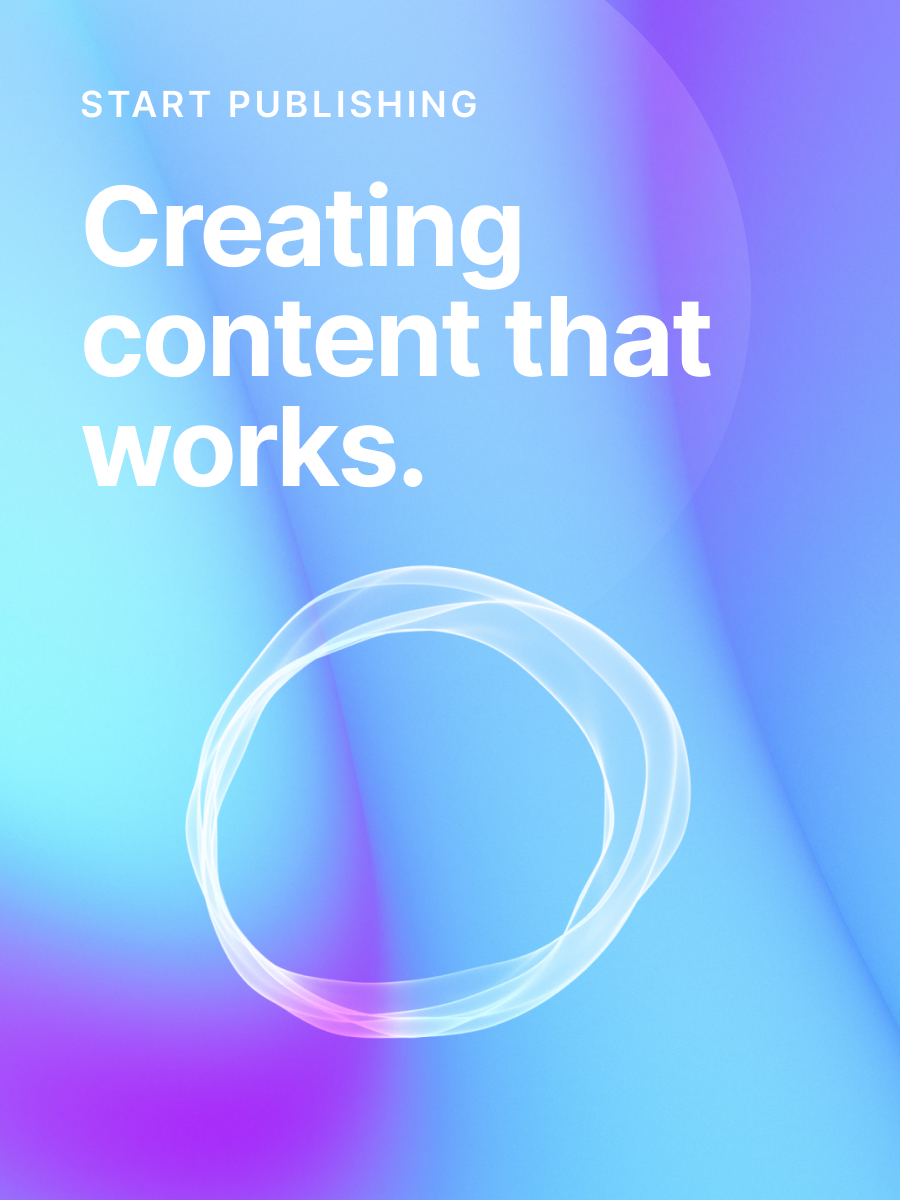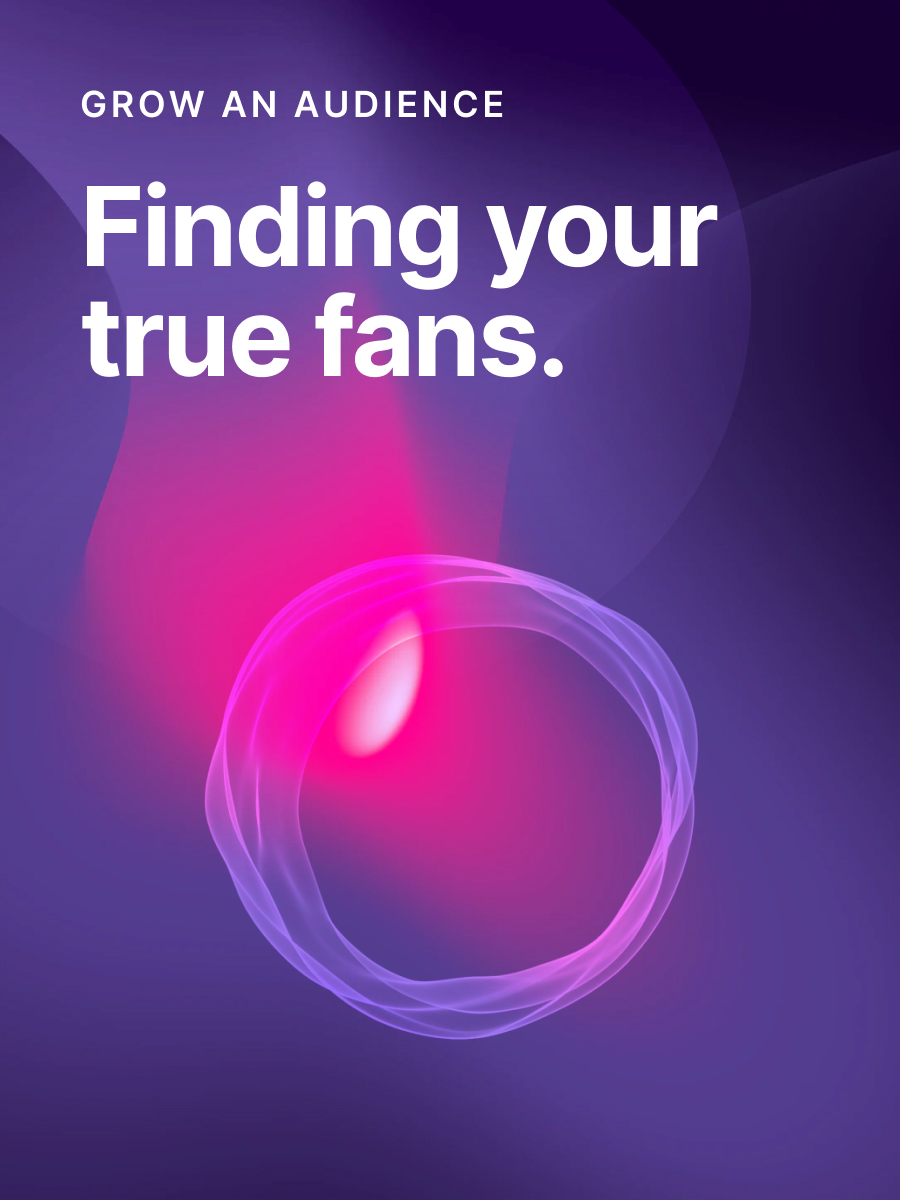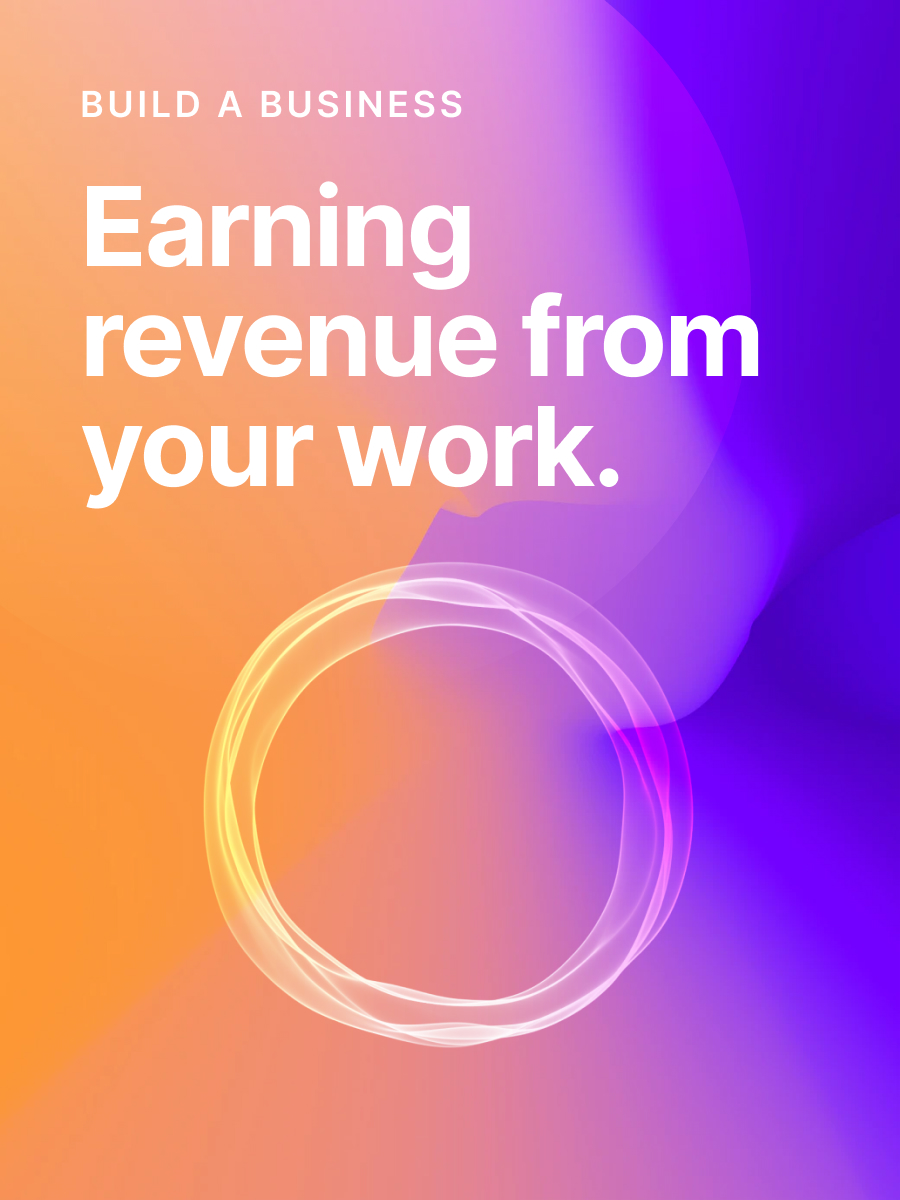📊 Examining your analytics
Publishing has changed a lot since the 1900s. (Feel old yet?) Websites, blogs, and email newsletters are a huge part of the publishing stratosphere, and understanding your subscription business metrics in 2025 can feel a bit complicated. We're here to make it easy. This week's newsletter is about recognizing your conversion rate, mastering your monthly revenue, and minimizing customer churn. Let's go!
In this week's issue 📨
- How to calculate conversions
- The importance of MRR
- Preventing customer churn
Was this email forwarded to you? Subscribe here!
Hot or not

To grow and sustain your business, you'll need to convert site visitors into paying subscribers, and your conversion rate is the calculation that can help identify your success. How many of your readers are taking specific actions, like subscribing to your newsletter or purchasing a premium membership? Your conversion rate tells all, and the higher it is, the more effective your strategy.
The team at Mailchimp helps explain some conversion rate characteristics, why it matters, and how to improve it.
Why do conversions matter?
- If you want to see how effective your content is, your conversion rate is a great way to visualize your success (or struggle). If you gained 20 paid subscribers last month, but more than 2,000 people visited your site, that's only a 1% conversion rate. Suddenly, the 20 paid subscribers may seem pretty low.
- Knowing your conversion rate allows you to revisit and retool your content and marketing strategies so your business can thrive. It's also a great way to see customer happiness in mathematical form. High conversion rate = happy readers, low conversion rate = apathetic readers.
Calculating conversions
- To figure out your conversion rate, simply use the number of people who interact with your content and divide by the number of conversions. For instance, if you sent out an email newsletter to 5,000 free subscribers, and 500 of them signed up for a paid membership, your conversion rate is 10%.
- Your conversion rate is a telltale sign of how attractive your public-facing content is. A "good" conversion rate is usually between 2% and 5%, depending on your industry. If you feel like your paid member conversion rate is too low, considering the number of visitors or subscribers, rework your content strategy!
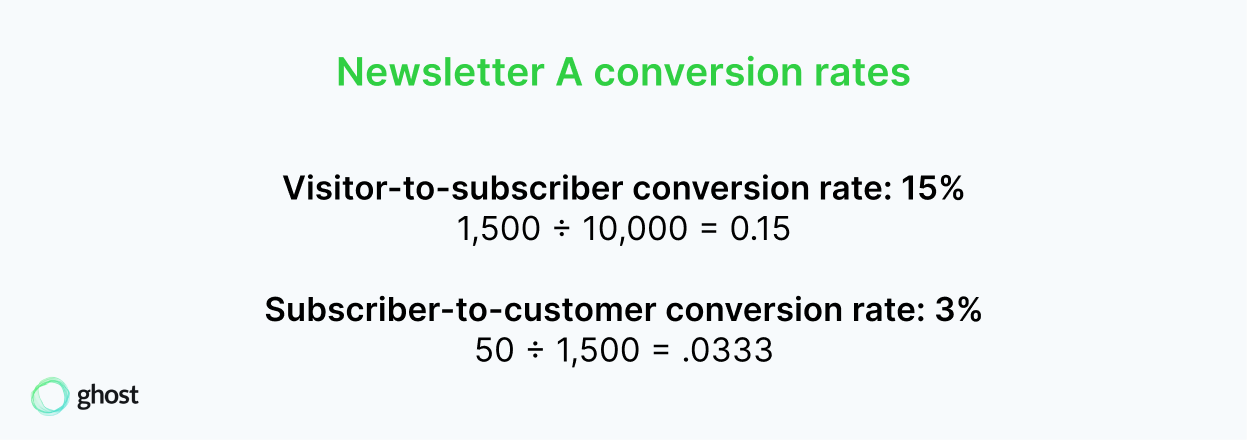
How to improve
- Making your site visually appealing and easy to understand is a great way to see your conversion rate rise. Use dynamic language, showcase a simple form or landing page with no more than a few fields, and remove any distractions that might encourage a site visitor's eyes to wander away from your offer.
- Everybody loves an incentive, so it's wise to present an irresistible offer to your audience that will encourage them to sign up. Consider discounts, limited-time offers, bonus downloads, and free webinars. Not sure what they'll love? Send out a survey to see what resonates.
What tools to use
- Ghost's new native analytics reveals valuable insights about your web traffic, newsletter performance, and audience growth to help you calculate and track conversions. With a window into what content is driving the most growth for your publication, you'll be able to determine what's working and what's not.
- Other analytics tools like ChartMogul, Google Analytics, and Plausible offer simple yet detailed information on site metrics, content performance, and reader activity. If you want a clear conversion picture and a layered measure on the ROI of your content marketing efforts, analytics apps are a must.
Interesting stories & ideas 📚
- How to detect AI-generated content – Ahrefs Blog
- When words and math collide – The Content Technologist
- Ghost 6.0 is here – One Man & His Blog
- 10 things YouTubers do after uploading – Shane Hummus
- How to win podcasting in 2025 – One Minute Blog
Month to month

MRR (monthly recurring revenue) is your predictable monthly income from your subscription business, aka your paid newsletter subscribers. If you offer premium memberships, your MRR should be one of your main publication pillars. Without it, the lights don't stay on, and your valuable, quality content doesn't get seen. If you've yet to dive into your MRR, it's time to break it all down.
The folks at Chargebee provide a good grasp of how to calculate MRR, why it's so important, and what you can do to increase it.
#1 Calculating your MRR starts with knowing your average revenue per user (ARPU). Your ARPU = total revenue / total users. For example, if your total revenue is $10k with 1k paid subscribers, your ARPU is $10.
#2 Once you know your ARPU, you can calculate your MRR by multiplying your ARPU by the total number of paid subscribers for the month. For example, if you have 500 subscribers with an ARPU of $5, your MRR is $2,500.
#3 When calculating MRR, don't forget to take into account any annual payments, cancelled subscriptions, or discounts. If you want a lot of the math done for you, check out Ghost's native analytics that automatically quantifies your MRR.

#4 Knowing your MRR gives you a reliable way to predict your cash flow for future months, allowing you to adjust your various financial flows to prepare for good or bad weather. It's like having your own little crystal ball.
#5 If your MRR starts to dip, switch up your revenue strategies, like offering free trials that can turn into paid memberships, providing yearly options to keep people around longer, or running special promos for new or loyal readers.
#6 As always, if your revenue isn't revenuing like it used to, re-examine your content to ensure it's up to par with your prices. Is your content worth it? What does your follower feedback look like? If you don't know, ask!
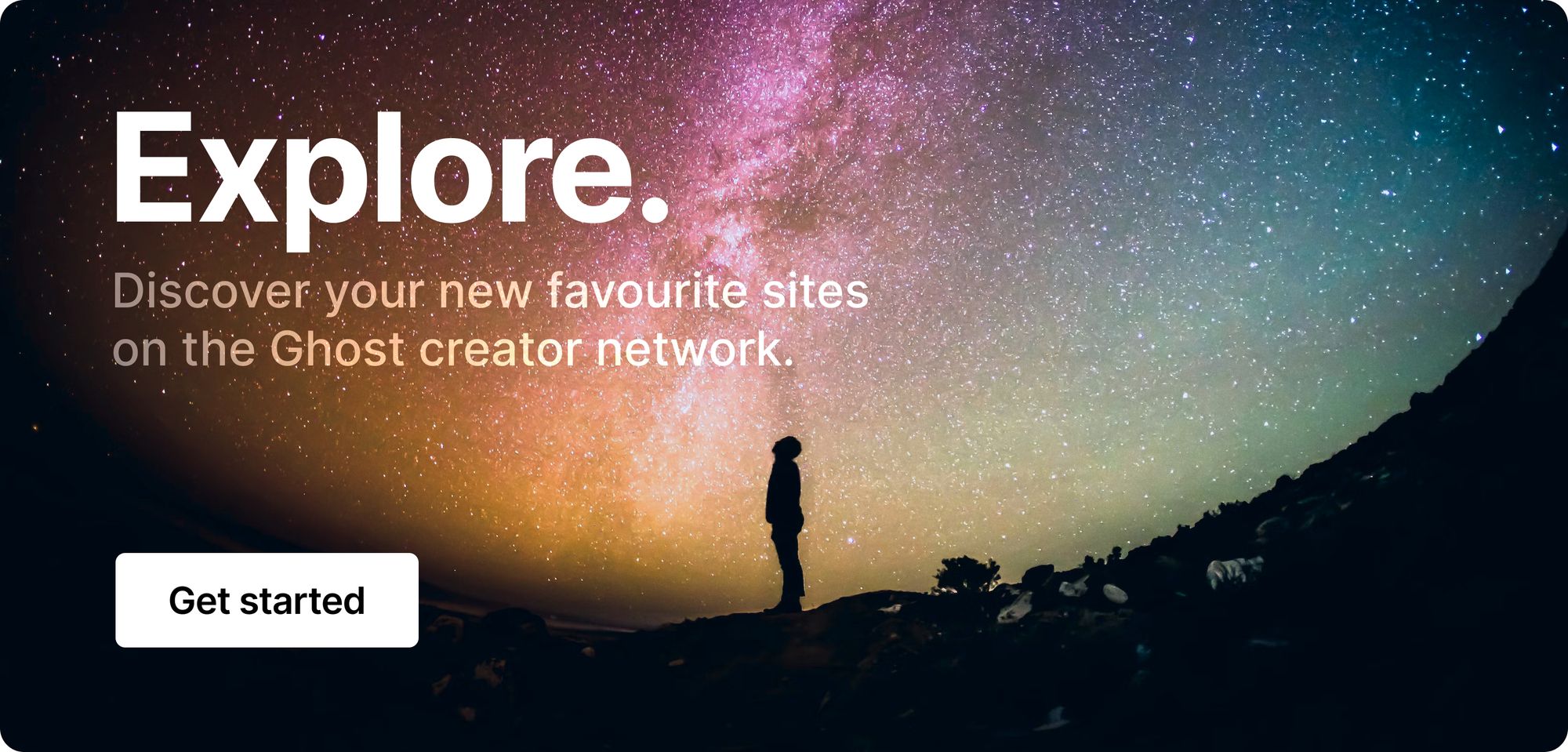
Churn around

Your subscribers are everything. You can have the best content in the world, but without anyone around to consume it, what's it all for? Reducing customer churn, even before it starts, should always be a top priority for your publication. If you're having trouble retaining your readers, it's time to hunker down and figure out how to turn loss into a learning experience. (With more math!)
The marketing team at SuperOffice reveals how to stop customer churn by building good retention practices.
‣ You can't reduce churn without first knowing why it happens. If you're seeing paid members turn to free far too often, ask them why. This shows your followers that you're paying attention. 68% of customers disengage because they feel like you don't care about them, so show them that you do.
‣ Now that you know why churn usually occurs, it's time to work towards stopping it before it happens. Staying present, available, and assisting your subscribers with whatever they need are great ways to be proactive. And don't forget to give them the best content they can't find anywhere else!
‣ Educating your members is another way to ensure that they're happy with how they're interacting with your publication. Is your content easily understood by most? Are your readers confident that you're solving their problems? Consider offering live demos and free webinars to build trust and loyalty.

‣ If subscribers are losing interest, you can see the signs before they officially cancel their membership. Start by checking member activity using various member filters, like "last seen" and "opened email". You can also use Ghost analytics to review your newsletter performance and adjust your content accordingly.
‣ You can also use member filters to label and segment your audience so you can identify which customers may need more from you. Who brings in the most revenue? Who's least engaged with your content? Apply labels as needed and use them to send specific newsletters to different segments of your audience.
‣ Overall, customer churn is natural, and you can't stop it 100%. Things happen, and people have their own lives, so don't stress too much if you see some cancellations each month. It's impossible to keep everyone happy all of the time, but as long as you're doing what you can to retain them, you can sleep soundly.
Curator's pick ✍️
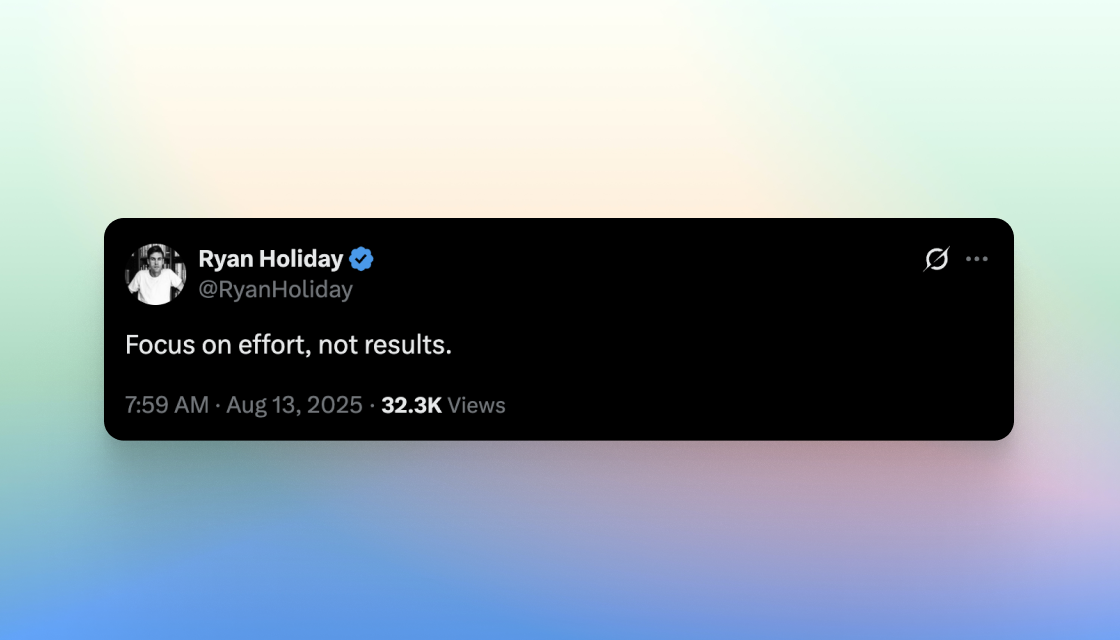
Enjoy this newsletter? Forward to a friend or hit reply to share your thoughts. We don't bite! 👻
Want more how-tos? Search our library of tutorials and subscribe to our monthly "Build with Ghost" newsletter.
Join our Ghost Creator Community! Connect with like-minded people who create content professionally — apply here.




